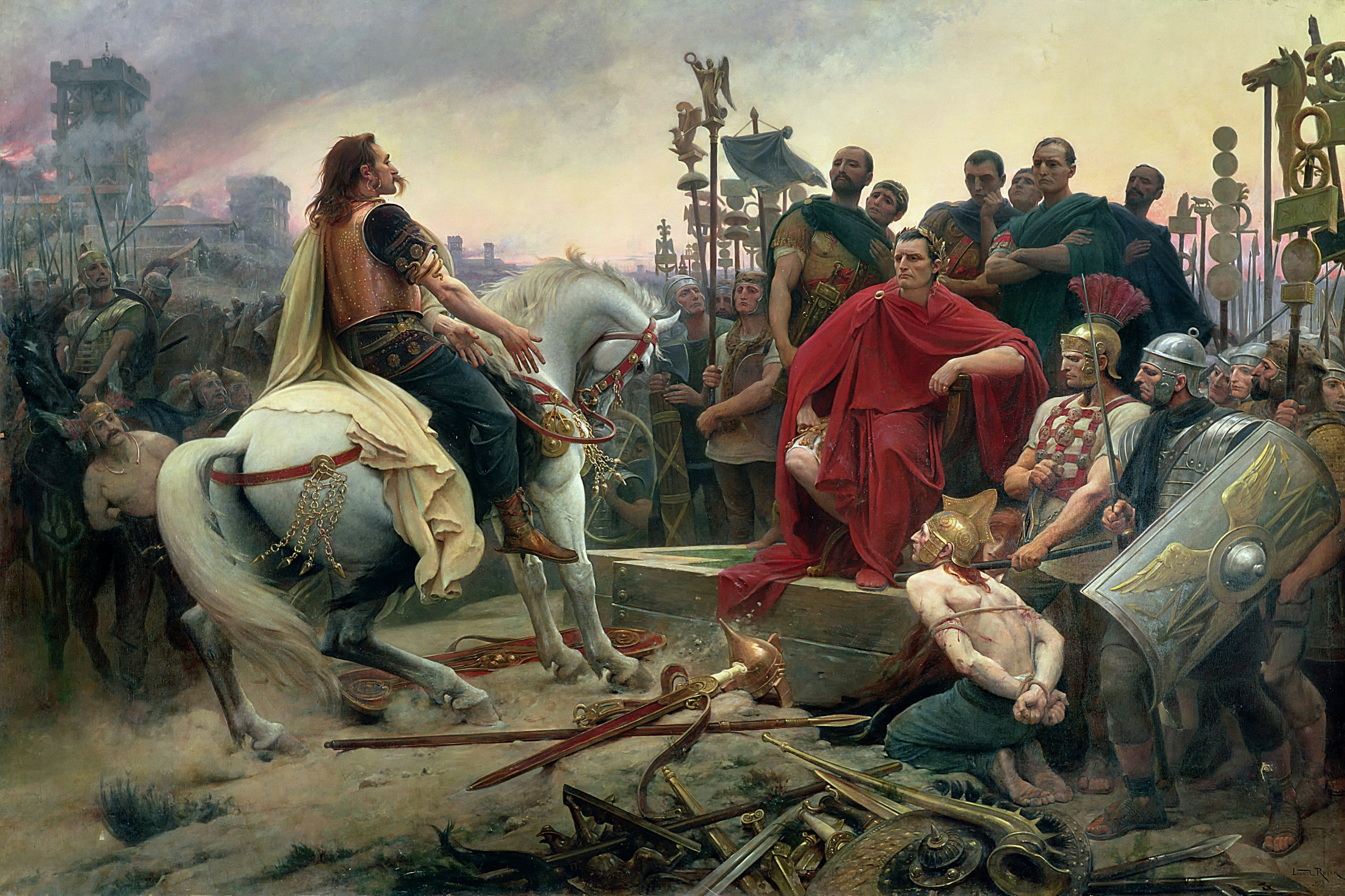Forest and Field ~ A short-essay
Forest
and Field
(A
short-essay)
When contrasting the militaristic methods of the Romans and the Celts (or Gauls), it is at once obvious what great differences their infantry had and what effect this had on their method of battle. The Romans, being of smaller and not-so-strong stature, arranged themselves in great phalanxes of men – giant squares with shields linked in front, and sometimes a roof of shields held overhead. On the other hand, the Celts were much greater and broader of stature, and so fought one-on-one, attacking their enemies not in organized groups, but in arrow-head-shaped swarms. Both tactics had their advantages, drawbacks, and origins.
Why did the Romans attack in phalanxes and the Celts in swarms? This could be due to the differences in their geography: the Romans originated from Italy and were used to battling on similar, wide-open landscapes such as those of the Middle East, Greece and North Africa; the Celts originated from the more northern areas of Europe where endless forests spanned nearly the widths of whole countries, and battle less resembled line-on-line confrontation, and more hunter-and-prey. It is small wonder, then, that the Celts seldom used formation, or that the Romans seldom broke from formation: their geography simply did not allow for the ideas.
When considering the differences between Roman and Celtic battle-tactics, dress can also be taken into consideration and partially explained by geography. Due not only to the open, sunny, windy landscape of Italy, but also the long-traditionally held brute-force methods of war, Romans were more accustomed to wearing clothes that covered the whole body, and a great deal of armor in battle. As for the Celts, being from the north they were more accustomed to wearing animal-skins for warmth, but when the seasons turned hot, to simply cast off their clothes, as the forests wherein they lived shielded them from any harmful amounts of sunlight. So descending into the much warmer Italy, they fought the Romans nearly naked, and wore little armor since their method of one-on-one fighting required more speed than brute-force (the latter of which they still had plenty of). This garb, or rather lack thereof, is recorded by the Romans to have been very striking and even terrifying.
Lastly, there is the differences in transportation to consider. While the Celtic infantry did often fight one-on-one with the Romans in pitched battle, even more frequently, the Celts are recorded to have used their great companies of cavalry against the Roman infantry line. Historians believe it was from the Celts that the Romans first obtained their example of militaristically-advantageous cavalry units, which they later incorporated into their own armies. It is certain that the great Celt, on horseback, and charging with a hundred other warriors against a Roman infantry line, posed a very formidable foe.
There are, however, two places where the Roman army trumped the Celtic: discipline and siege. Because of tribal structure in the Celtic army, they were less adept and quick-responding in an organized fashion to any Roman attack because their leaders would either have to agree on a course of action, or each warrior himself would have to decide on-the-fly which action best suited his need to survive. The Romans were much more organized, with a supreme General who passed orders down through levels of authority from units of a thousand soldiers, to companies of fifty or ten. As for siege, this is something the Celts never seriously attempted, but which has been attested throughout history as one of the Roman army’s greatest strengths.




1 people are talking about this
Woah, I learned a lot from reading this! Thanks for posting it!
ReplyDelete